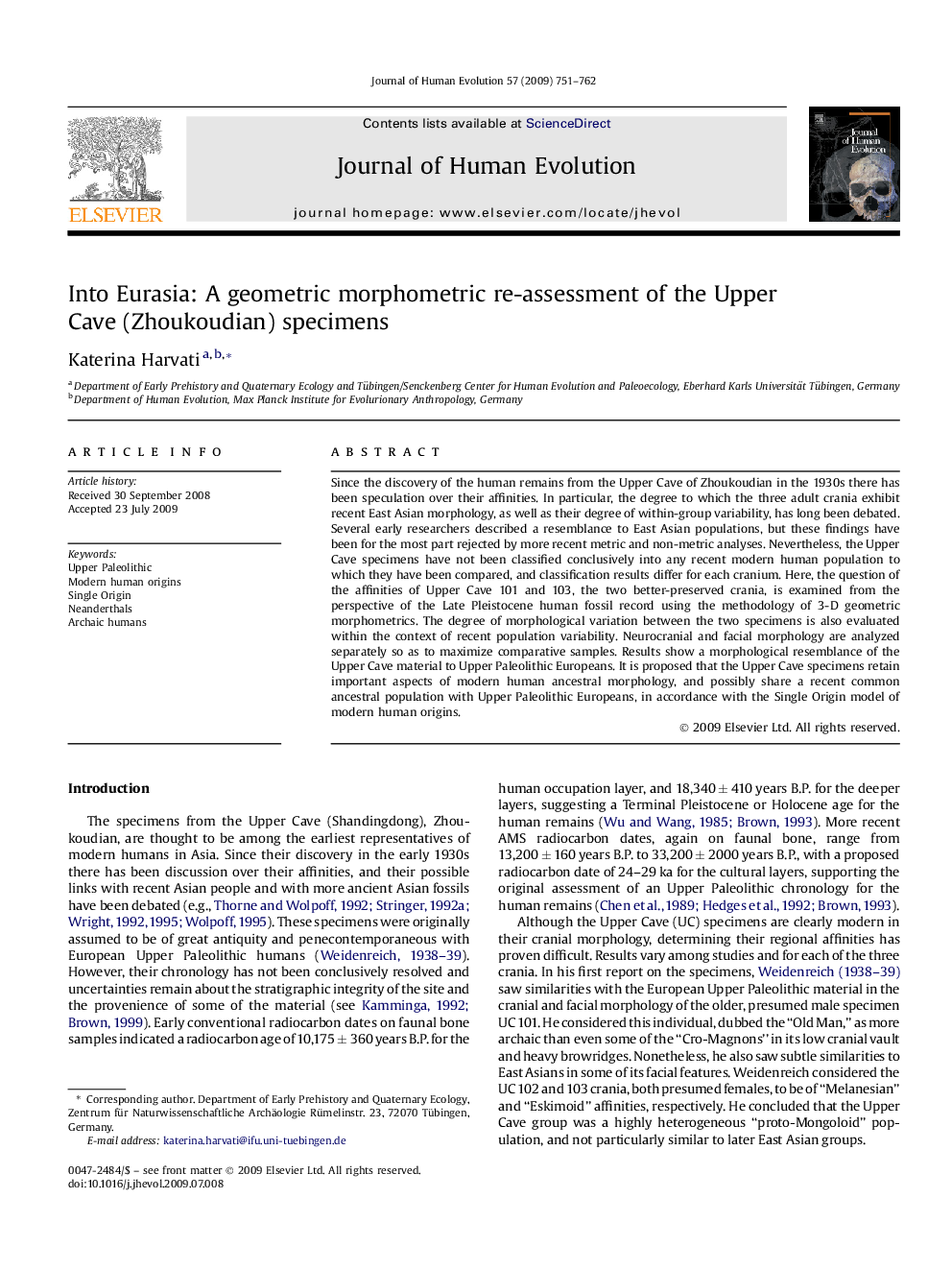| Article ID | Journal | Published Year | Pages | File Type |
|---|---|---|---|---|
| 4556806 | Journal of Human Evolution | 2009 | 12 Pages |
Since the discovery of the human remains from the Upper Cave of Zhoukoudian in the 1930s there has been speculation over their affinities. In particular, the degree to which the three adult crania exhibit recent East Asian morphology, as well as their degree of within-group variability, has long been debated. Several early researchers described a resemblance to East Asian populations, but these findings have been for the most part rejected by more recent metric and non-metric analyses. Nevertheless, the Upper Cave specimens have not been classified conclusively into any recent modern human population to which they have been compared, and classification results differ for each cranium. Here, the question of the affinities of Upper Cave 101 and 103, the two better-preserved crania, is examined from the perspective of the Late Pleistocene human fossil record using the methodology of 3-D geometric morphometrics. The degree of morphological variation between the two specimens is also evaluated within the context of recent population variability. Neurocranial and facial morphology are analyzed separately so as to maximize comparative samples. Results show a morphological resemblance of the Upper Cave material to Upper Paleolithic Europeans. It is proposed that the Upper Cave specimens retain important aspects of modern human ancestral morphology, and possibly share a recent common ancestral population with Upper Paleolithic Europeans, in accordance with the Single Origin model of modern human origins.
